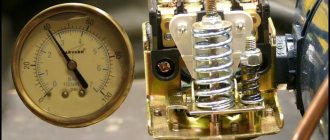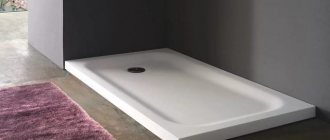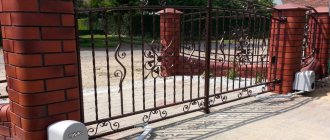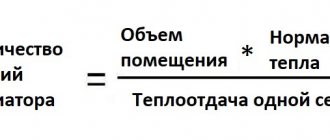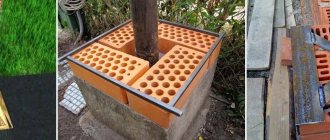Imagine that to get water at your dacha you can simply open the tap. That there is no need to fill containers with buckets for basic hygiene procedures, cooking, and cleaning. To do this, you just need to install pumping equipment with a pressure sensor, but first you need to understand its structure, don’t you agree?
Our article will introduce you in fine detail to the pressure switch for the pumping station. You will learn how the device works, how it activates and stops pumping. We describe in detail the popular options for pressure sensors and how to adjust them.
The material lists technological nuances and methods for setting up the relay. The information presented is ideally complemented by useful diagrams, photos and video applications.
The role of the pressure switch in the water supply system
The device, small in size, belongs to the group of automation systems servicing pumping equipment. Its functionality is only possible in conjunction with a hydraulic accumulator.
Despite its small size, the relay performs a number of important functions:
- allows all devices to function in the specified mode;
- Reacts sensitively to changes in on/off thresholds;
- activates and stops the pump when critical values are reached.
Simply put, it regulates the automatic pumping process of water in independent water supply schemes with a membrane tank. The adjustment is made during the switching of electrical circuits when two pressure parameters are reached in the system, accepted as the upper and lower limits.
When purchasing a pumping station, you receive a set of equipment, part of which is a pressure switch. Externally, models of different brands and series are similar, but may differ in shape, size, body color, setting method and location.
When assembling automation yourself, you need to study the characteristics of the devices and choose the most suitable ones for a particular system.
Layout of devices involved in organizing water supply to a private house from a well or borehole. The relay controls the operating pressure in the network, and the pressure gauge displays the current parameters
The devices are adapted for convenient installation and maintenance of the pumping station. Most often, they are secured with a fitting at the inlet of the hydraulic accumulator, but they can also be mounted in the pipe of the cold water system in close proximity to the device.
Image gallery
Photo from
Original Grundfos pressure switch
Relay with integrated pressure gauge AL-KO
Domestic pressure switch Whirlwind
Gardena brand equipment for the garden
Connecting the water pressure switch
The water pressure switch for the pump is connected to two systems at once: electricity and water supply. It is installed permanently, since there is no need to move the device.
Electrical part
To connect a pressure switch, a dedicated line is not required, but is desirable - there is a greater chance that the device will work longer. A cable with a solid copper core with a cross-section of at least 2.5 square meters must run from the shield. mm. It is advisable to install a combination of automatic + RCD or difavtomat. The parameters are selected based on current and depend more on the characteristics of the pump, since the water pressure switch consumes very little current. The circuit must have grounding - the combination of water and electricity creates a zone of increased danger.
Connection diagram of the water pressure switch to the electrical panel
The cables are inserted into special inputs on the back of the case. Under the cover there is a terminal block. It has three pairs of contacts:
- grounding - the corresponding conductors coming from the panel and from the pump are connected;
- line or “line” terminals - for connecting the phase and neutral wires from the panel;
- terminals for similar wires from the pump (usually on the block located above).
Location of terminals on the water pressure switch housing
The connection is standard - the conductors are stripped of insulation, inserted into the connector, and tightened with a clamping bolt. By pulling the conductor, check whether it is securely clamped. After 30-60 minutes, the bolts can be tightened, since copper is a soft material and the contact may weaken.
Pipeline connection
There are different ways to connect a water pressure switch to the plumbing system. The most convenient option is to install a special adapter with all the required outputs - a five-pin fitting. The same system can be assembled from other fittings, it’s just that it’s always easier to use a ready-made version.
It is screwed onto the pipe on the back of the housing; a hydraulic accumulator, a supply hose from the pump and a line that goes into the house are connected to the other outputs. You can also install a mud pan and a pressure gauge.
An example of tying a pressure switch for a pump
A pressure gauge is a necessary thing - to monitor the pressure in the system, monitor the relay settings. A mud trap is also a necessary device, but it can be installed separately on the pipeline from the pump. In general, a whole system of filters for water purification is desirable.
With this scheme, at high flow rates, water is supplied directly to the system - bypassing the hydraulic accumulator. It begins to fill after all the taps in the house are closed.
Design and principle of operation
The pressure control relay has a simple dismountable design, thanks to which the user can independently adjust the operation of the accumulator, narrow or expand the parameters.
The internal parts are housed in a durable plastic case that resembles an irregularly shaped box. It has a smooth surface and only 3 external working elements: two coupling clamps for electrical cables coming from the network and the pump, and a ¼, ½, 1 inch metal pipe for connecting to the system. The thread on the pipe can be either external or internal.
To remove the device body, you need to arm yourself with a flat screwdriver and slowly and carefully unscrew the screw recessed into the plastic, located above the axis of the large spring
Inside there is a base to which the working elements are attached: large and small springs with adjusting nuts, contacts for connection, a membrane and a plate that changes its position depending on the increase/decrease in pressure parameters in the system.
Image gallery
Photo from
Terminals for connecting the ground wire
Terminals for connecting phase and neutral
Large spring and its purpose
Small adjustment spring
The contacts of two electrical circuits, closed when the maximum pressure parameters are reached, are located under the springs, which are fixed to a metal plate. When the pressure increases, the membrane of the hydraulic tank is deformed, the pressure inside the bulb increases, and the mass of water presses on the plate. That, in turn, begins to act on a large spring.
When compressed, the spring is activated and opens the contact that supplies voltage to the motor. As a result, the pumping station is switched off. With a decrease in pressure (usually in the range of 1.4 - 1.6 bar), the plate returns to its original position and the contacts close again - the motor begins to work and pump water.
When purchasing a new pumping station, it is recommended to test the equipment to ensure that all components are working properly. Checking the performance of the relay occurs in the sequence outlined below. As an example, the Haitun PC-19 model.
Image gallery
Photo from
Pumping station with automation unit
The pressure gauge is built into the relay housing
Equipment operation monitoring
Dry running alarm
Mechanical models do not have an indication or control panel, but they can be equipped with a forced activation button. It is necessary to make it function.
Purpose and device
In order to maintain constant pressure in the water supply system of a private house, two devices are needed - a hydraulic accumulator and a pressure switch. Both of these devices are connected to the pump through a pipeline - the pressure switch is located in the middle between the pump and the accumulator. Most often it is located in close proximity to this tank, but some models can be installed on the pump body (even submersible). Let's understand the purpose of these devices and how the system works.
One of the pump connection diagrams
A hydraulic accumulator is a container divided into two halves by an elastic bulb or membrane. In one there is air under some pressure, in the second water is pumped. The water pressure in the accumulator and the amount of water that can be pumped into it are regulated by the amount of pumped air. The more air there is, the higher the pressure is maintained in the system. But at the same time, less water can be pumped into the container. Usually it is possible to pump no more than half the volume into the container. That is, no more than 40-50 liters can be pumped into a hydraulic accumulator with a volume of 100 liters.
For normal operation of household appliances, a range of 1.4 atm - 2.8 atm is required. To maintain such a framework, a pressure switch is required. It has two response limits - upper and lower. When the lower limit is reached, the relay starts the pump, it pumps water into the accumulator, and the pressure in it (and in the system) increases. When the system pressure reaches the upper limit, the relay turns off the pump.
In a scheme with a hydraulic accumulator, water is consumed from the tank for some time. When enough has flowed out for the pressure to drop to the lower response threshold, the pump will turn on. This is how this system works.
Pressure switch device
This device consists of two parts - electric and hydraulic. The electrical part is a group of contacts that closes and opens turning the pump on/off. The hydraulic part is a membrane that exerts pressure on the metal base and springs (large and small) with the help of which the pump on/off pressure can be changed.
Water pressure switch device
The hydraulic outlet is located on the back of the relay. This can be an outlet with an external thread or with an American-type nut. The second option is more convenient during installation - in the first case, you either need to look for an adapter with a union nut of a suitable size or twist the device itself, screwing it onto the thread, but this is not always possible.
The electrical inputs are also located on the back of the case, and the terminal block itself, where the wires are connected, is hidden under the cover.
Types and varieties
There are two types of water pressure switches: mechanical and electronic. Mechanical ones are much cheaper and are usually preferred, while electronic ones are mainly delivered to order.
| Name | Pressure adjustment limit | Factory settings | Manufacturer/country | Device protection class | Price |
| RDM-5 Gilex | 1- 4.6 atm | 1.4 - 2.8 atm | Gilex/Russia | IP 44 | 13-15$ |
| Italtecnica РМ/5G (m) 1/4″ | 1 - 5 atm | 1.4 - 2.8 atm | Italy | IP 44 | 27-30$ |
| Italtecnica RT/12 (m) | 1 - 12 atm | 5 - 7 atm | Italy | IP 44 | 27-30$ |
| Grundfos (Condor) MDR 5-5 | 1.5 - 5 atm | 2.8 - 4.1 atm | Germany | IP 54 | 55-75$ |
| Italtecnica PM53W 1″ | 1.5 - 5 atm | Italy | 7-11 $ | ||
| Genebre 3781 1/4″ | 1 - 4 atm | 0.4 - 2.8 atm | Spain | 7-13$ |
The difference in prices in different stores can be more than significant. Although, as usual, when buying cheap copies, there is a risk of running into a fake.
Criteria for selecting a relay for a pump
There are many universal models that are sold separately from pumping stations and can be used to assemble a system with your own hands. When purchasing a relay or automation unit, you must rely on the characteristics of the device. They can be found in the technical documentation.
It is important that the relay’s capabilities match the characteristics of the rest of the equipment.
Before purchasing an automation unit or relay, carefully study the technical data of the model. In most cases, they are standard: nominal pressure from 1.5 atm, maximum - 3 atm.
You should start from the nominal pressure, but the upper limit of the operating pressure is also important. It is necessary to take into account electrical indicators and maximum water temperature. A mandatory parameter is the IP class, which indicates dust and moisture protection: the higher the value, the better.
Connecting thread sizes are indicated in inches: for example, ¼ inch or 1 inch. They must match the dimensions of the connection fitting. The dimensions and weight of the devices themselves are approximately the same and are secondary characteristics.
It should also be remembered that there are built-in and remote models. Most commercially available devices are universal: they can be connected directly to the hydraulic tank or mounted on a pipe.
Electronic relays have the same functions as mechanical ones: they are responsible for the water supply and protect the pump mechanism from dry running. They are more capricious than simple models and are sensitive to suspended particles in the water. To protect the device, a mesh dirt filter is installed in front of its connection point.
In essence, the electronic device is an automation unit with a convenient display and a system of buttons that makes it possible to make adjustments without disassembling the device
One of the differences from the traditional model is the delay in turning off the pump. If, when the pressure increases, the mechanical device responds quickly, the electronic analogue turns off the equipment only after 10-15 seconds. This is explained by a careful attitude towards equipment: the less often the pump is turned on/off, the longer it will last.
Some switch models, as well as automation units, operate without a hydraulic accumulator, but their functionality is limited to simpler use. Suppose they are great for watering the garden or pumping liquid from one reservoir to another, but are not used in the home water supply system.
At the same time, the technical characteristics of the devices are the same as those of traditional relays: factory setting is 1.5 atm, shutdown threshold is 3 atm, maximum value is 10 atm.
Electrical connection diagram
Depending on the needs of the user and his financial capabilities, you can choose one of the methods of connecting the deep pump to the electrical network.
Without automation
Without auxiliary control devices, the pump is connected using a pre-installed electrical outlet with a grounding contact. The pump is also grounded. For this purpose, the main bus of the house is used, connecting to the existing ground loop of the building.
A three-core cable is used to supply electricity to the outlet. The power supply voltage of the submersible pump is 220V. 380-volt or 150-volt outlets cannot be used.
Via pressure switch
To reduce the cost of a set of pressure equipment, you can use a connection diagram for a well pump only with a pressure switch without a control unit. The device turns off the pump when the pressure reaches a maximum, and starts it when the pressure drops to a minimum.
Using control unit
When selecting an automation model, you first need to find out what protective system is already installed in the pump by the manufacturer. Modern devices are already protected from overheating and idle operation. Sometimes the equipment is equipped with a float mechanism. Taking this data into account, you can choose one of three automation options - simple, with a second or third generation electric control unit.
The simplest protection is most often used for automatic water supply. The control unit here is assembled from three devices:
- Dry running blocker. It will turn off the device, which operates without water, preventing overheating. Sometimes the additional installation of a float switch is allowed. It performs the same functions, turning off the pumping equipment when the water level drops, preventing it from overheating. The devices may seem primitive, but they provide effective protection for the electric motor.
- Hydraulic accumulator. Without it, it will not be possible to provide automatic water supply. The hydraulic tank works as a water storage tank. Inside there is a working mechanism - a diaphragm.
- Pressure switch equipped with a pressure gauge. This device allows you to configure the operation of relay contacts.
It is not difficult to equip pressure equipment with simple automation with your own hands. The principle of operation of the system is simple: as water flows, the pressure in the hydraulic tank decreases. When the minimum value is reached, the relay starts the pressure equipment, which pumps water into the storage tank. When the pressure in the hydraulic accumulator reaches its maximum, the relay device turns off the installation. As water is consumed, the cycle repeats.
The pressure limits in the storage tank are adjusted using a relay. In the device, using a pressure gauge, the minimum and maximum response parameters are set.
In second-generation automation, the connection is made through an electrical unit with a set of sensors. They are mounted directly on pressure equipment, as well as inside the water supply network, and allow the system to function without a hydraulic tank. The impulse from the sensors goes to the electronic unit, which controls the system.
Operation of pressure equipment with this scheme for connecting a submersible well pump to automation:
- Liquid accumulates only in the water supply where one of the sensors is installed.
- When the pressure drops, the sensor sends a pulse to the control unit, which starts the pump.
- After reaching the required pressure of the water flow in the water supply, the pump is turned off according to a similar scheme.
To install such automation, you will need basic knowledge of electrical engineering. This and the previous protection work almost identically - based on water pressure. However, the electric unit with sensors is more expensive, which is why it is not so popular among consumers. Even when using automation, you don’t have to use a hydraulic tank, although if there is a power outage, you won’t be left without water. There is always a reserve left in the drive.
Third generation automation is reliable, high quality and expensive. Its installation allows you to significantly save on electricity due to ultra-precise tuning of the electric motor. The connection diagram for advanced automation to a deep well pump is very complex, so you should contact a professional to connect it. But it provides complete protection of the motor from various breakdowns, for example, overheating during dry running or burning of the windings during power surges.
The unit operates from sensors without a hydraulic tank. Efficiency is achieved through fine adjustments.
Reasons for customization
The dismountable design of the device and the setup instructions were not invented in vain. Factory parameters rarely meet the requirements of the water supply system, as well as the volume of the accumulator.
Before the relay correction procedure, you must make sure that the hydraulic accumulator is in good working order and that the water supply system to the house is functioning properly, otherwise you may set the operating parameters incorrectly
Using settings, you can not only “adjust” the upper and lower limits to the optimal values, but also make the operation of the equipment more gentle - for example, reduce the number of pump starts/stops. To do this, it is enough to slightly increase the range between operating pressures - delta.
You may also encounter incorrect settings of the factory model. If the delta is incorrectly coordinated and made too small, the pump will constantly turn on and off, reacting to a minimal increase in parameters.
Rating of the best expensive relays
There are a huge variety of pressure switches for water, and sometimes making a choice is not at all easy. Electronic mechanisms belong to the category of expensive devices. Their main advantage is ease of use, including making settings. Due to this, they are characterized by high operating accuracy.
However, it should be noted that for private houses (domestic needs), this indicator cannot be called key. The accuracy of operation does not play a role in the correct operation.
For domestic water supply systems, expensive devices may simply not be suitable. This is due to the increased sensitivity of the sensors. This will require increased voltage. If the choice was made in favor of such devices, you will need to purchase auxiliary and equally expensive equipment that would allow you to maintain a certain indicator in the network. Well-known brands produce products in the region of $40-75.
The best expensive relay models
Danfoss KPI 35G ¼
This model can rightfully top any rating of quality structures. Presented by one of the best manufacturers. It is an electromechanical type control device that can be used in any conditions, both domestic and technical. High-quality equipment has received over 10 quality certificates and diplomas, which indicate a high level of reliability and efficiency of the products. The range of settings allows you to work with indicators in the range of 0.2-28 bar. The differences can also be adjusted. Designed to work with gaseous and liquid media. Able to withstand significant loads. On request, the manufacturer can equip the device with gold-plated contacts.
Price – 6100 rub.
Danfoss KPI 35G ¼
Advantages:
- ability to work under high load conditions;
- high-quality assembly;
- use of quality materials;
- manual adjustment.
Flaws:
- price.
Grundfos FF 4/4 DAY
Equipment of Danish origin. Used to control pumping equipment. The model is an electromechanical device operating on 220 V. The declared protection class is IP54. Designed to operate with a working pressure of 4 bar. The connecting pipe has a 3/8 inch thread. Compared to various Chinese devices of the same type, this equipment cannot be compared with it. The power of the equipment, the quality of assembly and the materials used are quite high. It should be noted that the purchased equipment is easy to use.
Price – 6000 rub.
Grundfos FF 4/4 DAY
Advantages:
- use of quality materials;
- design;
- reliability;
- ease of use;
- assembly.
Flaws:
- price.
Condor Werce MDR 5-5
The brand of this device is considered one of the best manufacturers of pumping equipment and automation. Manufactured in Germany and is an electromechanical sample with a load rating of 5500 W. In fact, the pumps have sufficient power and are powered from a 220 V network. The designated protection class is IP54. Installation on a hot water supply line with a working pressure of 5 bar is permissible. The coolant should not exceed a temperature of 80°C.
Cost – 4700 rub.
Condor Werce MDR 5-5
Advantages:
- installation is allowed in both hot and cold water supply systems;
- build quality.
Flaws:
- significant price.
Whirlwind ARD-1
A Russian-made product, assembled in China. The functionality of the unit meets all the needs of the modern consumer. An irrigation mode is provided. There are protection functions against frequent switching on, system breaks and leaks. If necessary, the system will restart itself, which will allow you to obtain data regarding the water level. There is also protection against idle (dry) running. It is powered by 220 V. The maximum load is 1500 W. Equipped with IP65 protection.
Price – 3550 rub.
Whirlwind ARD-1
Advantages:
- ease of use;
- quick installation;
- assembly;
- performing manual settings;
- initial characteristics;
- wide functionality.
Flaws:
- not detected.
Aquacontrol RDS-M 1-2
Product from a domestic manufacturer. This electronic equipment has quite extensive functionality. Leak protection available. It is possible to automatically restart the system. The dry-running protection response delay is 0.5 minutes. Recharge from a 220 V network. In this case, the liquid temperature should not exceed 40 ° C. A 1.5 cm pipe is used for connection. Power indicator – 1500 W. Basic parameters are set quickly and easily. To do this, you need to turn the screw using a screwdriver directly on the control panel.
| Session | Adjustment range |
| Dry running protection | 30-180 seconds |
| Shutdown | 0-6.5 bar |
| Inclusion | 0-6 bar |
The changes made can be observed using the arrow, which is located on the scale of the pressure gauge provided by the manufacturer.
Price per set – 3000 rub.
Aquacontrol RDS-M 1-2
Advantages:
- reasonable cost;
- build quality;
- design;
- making adjustments;
- ease of setup.
Flaws:
- not detected.
Recommendations for adjusting the device
By manipulating the springs, you can change the pump shutdown threshold, as well as adjust the volume of water in the accumulator tank. It is generally accepted that the larger the delta, the larger the volume of liquid in the tank. For example, with a delta of 2 atm. the tank is 50% filled with water, with a delta of 1 atm. – by 25%.
To achieve a delta of 2 atm, you need to set the lower pressure value, for example, to 1.8 atm, and the upper one to 3.8 atm, changing the position of the small and large springs
First, let's remember the general rules of adjustment:
- to increase the upper response limit, that is, increase the shutdown pressure, tighten the nut on the large spring; to reduce the “ceiling” - weaken it;
- to increase the difference between the two pressure indicators, tighten the nut on the small spring; to reduce the delta, loosen it;
- moving the nut clockwise means increasing the parameters, counter-clockwise means decreasing them;
- To set up, you need to connect a pressure gauge, which shows the initial and changed parameters;
- Before starting the adjustment, you need to clean the filters, fill the tank with water and make sure that all pumping equipment is working.
All adjustment actions are carried out only after testing the system and detecting low performance or obvious errors in operation. It also happens that the station stops working due to a blockage that has clogged the filter or one of the narrow pipes. There is another article on our website that describes the process of adjusting the pressure switch in more detail - follow the link to read the material.
Equipment selection rules
For autonomous water supply systems, you should choose a relay for household use
Such systems are characterized by basic parameters: the maximum pressure value is no more than 5 atmospheres, operating pressure values are usually in the range from 1.4 to 2.8 atm. When setting up the relay, it is important to remember that the magnitude of the difference between the limit values (settings on the springs) directly affects the volume of water that the pump, with such settings, will pump into the accumulator reservoir. A large volume means that the pumping unit will turn on less often, but the technical capabilities of the system must not be exceeded in this regard. You should not save excessively by purchasing a relay of unknown origin.
Such equipment will not only fail to ensure correct operation, but will also most likely cause damage to other equipment included in the system. Connecting the automatic pump and pressure switch together with a high-quality pressure gauge installed next to the relay will allow you to monitor the operating parameters of the system and help detect violations at an early stage, when there are still no external manifestations.
We have information about hydraulic accumulators here
What models are there and what is important when choosing them
We talked about ways to clean a well in this material.
Practical examples of relay configuration
Let's look at cases when turning to adjusting the pressure switch is really necessary. This usually happens when purchasing a new device or when frequent pump shutdowns occur.
You will also need to configure it if you received a used device with lost parameters.
Connecting a new device
At this stage, you should check whether the factory settings are correct and, if necessary, make some changes to the operation of the pump.
Image gallery
Photo from
Stage 1 – equipment preparation
Stage 2 - adjusting the switching value
Stage 3 - adjusting the shutdown value
Stage 4 – testing the system operation
To track the progress of work, it is recommended to write down all received data on a piece of paper. In the future, you can return the initial settings or change the parameters again.
The pump stopped turning off
In this case, we forcibly turn off the pumping equipment and proceed in the following order:
- We turn it on and wait until the pressure reaches its maximum level - let's say 3.7 atm.
- We turn off the equipment and lower the pressure by draining water - for example, to 3.1 atm.
- Lightly tighten the nut on the small spring, increasing the differential value.
- We check how the cut-off pressure has changed and test the system.
- We configure the optimal option by tightening and loosening the nuts on both springs.
If the reason was due to incorrect initial settings, it can be solved without buying a new relay. It is recommended to regularly, once every 1-2 months, check the operation of the pressure switch and, if necessary, adjust the on/off limits.
Situations that do not require adjustment
There can be many reasons when the pump does not turn off or turn on - from a blockage in the communications to engine failure. Therefore, before you start disassembling the relay, you should make sure that the rest of the pumping station equipment is working properly.
If everything is fine with the other devices, the problem is in the automation. Let's move on to inspecting the pressure switch. We disconnect it from the fitting and wires, remove the cover and check two critical points: the thin pipe connecting to the system and the contact block.
Image gallery
Photo from
The connection pipe to the hydraulic tank is clogged
Cleaning the relay inlet
Electrical contacts are clogged
Cleaning the contact block
If cleaning measures did not help, and adjusting the position of the springs was also in vain, most likely the relay is no longer suitable for further use and should be replaced with a new one.
Suppose you come across an old but working device. Its adjustment occurs in the same order as setting up a new relay. Before starting work, make sure that the device is intact, disassemble it and check that all contacts and springs are in place.
How to disassemble and clean the RDM-5 pressure switch
It would seem that what could be simpler in a household pumping station than a pressure switch? However, it happens that it also fails quite quickly: the pump stops turning off when the maximum set shutdown pressure is reached or, for example, the pressure switch does not turn on the pump until all the water has flowed out of the hydrophore. What to do? Do I need to change the pressure switch, or can I fix the old one?
In some cases, the relay settings may become lost over time, and it is enough to just adjust the springs properly. If you have no experience in this, it is better not to twist anything, but to contact the service specialists.
TOP 8 surface pumping stations
| Photo | Name | Rating | Price | |
| #1 | AQUAROBOT JET 100 L | ⭐ 100 / 1001 – voice | Find out the price | |
| #2 | UNIPUMP AUTO JET 100 L | ⭐ 99 / 1001 – voice | Find out the price | |
| #3 | Marina CAM 100/25 | ⭐ 98 / 100 | Find out the price | |
| #4 | GILEX Jumbo 70/50 N-24 | ⭐ 97 / 1001 - voice | Find out the price | |
| #5 | DENZEL PSX1300 | ⭐ 96 / 100 | Find out the price | |
| #6 | VORTEX ASV-1200/50 | ⭐ 95 / 1002 — votes | Find out the price | |
| #7 | GARDENA 3000/4 Classic (1770) | ⭐ 94 / 100 | Find out the price | |
| #8 | Quattro Elementi Automatico 1000 Inox (19 l.) | ⭐ 93 / 1001 – voice | Find out the price |
Which pumping station would you choose or recommend?
Take the survey
Types of devices
Manufacturers offer various options for devices that are electromechanical or electronic. They may be included with the pump unit, or this element can be installed independently.
The relay may be included with the pump unit
Important! The cost of electronic devices can exceed the price of mechanical analogues by five times or more.
Electromechanical relay
Devices of this type have long been successfully used in the installation of water supply systems. Despite the simplicity of the design, they have proven themselves to be reliable and easy to use.
Prices for water pressure switch for pump
water pressure switch for pump
Electromechanical relay
The operation of a mechanical device is based on the closure and disconnection of contacts due to changes in the position of a flexible membrane located inside the product. It is associated with two spring elements that respond to its position. One spring (larger) is set to maximum pressure, the other to the delta between the upper and lower limits.
When the pressure reaches a minimum, the plate weakens, the contacts become closed and the electric drive of the pumping equipment begins to work. If the pressure reaches the highest threshold, the contact under the spring is released and the engine is turned off. The elasticity of the springs is changed by adjusting nuts. To set the relay to operate at a higher pressure value, they are tightened. Attenuation leads to a decrease in the parameter.
Electromechanical pressure switches
Electronic device
To control the operation of the relay, models of this type use electronic sensors that measure pressure using a piezoresistive effect.
Electronic water pressure switch for pump
Electronic devices are equipped with various additional options, for example, the ability to softly start or shut down the station in an emergency. They are easier to configure, and pressure thresholds are set more accurately. It is worth noting that for domestic use, high accuracy is usually not required.
Most often, electronic models are equipped with their own small-volume hydraulic tank, which further protects the system from water hammer. The products are characterized by high reliability and durability, but are rather capricious regarding the quality of the pumped liquid. Therefore, to protect the relay it is necessary to install filter elements.
Electronic pressure switch Optima EP-1 with dry-running protection
Important! When setting up a relay that has a piezoresistive sensor, there is no need to open the box. The entire procedure is carried out using the buttons located on the front panel.
What types of relays are there?
The following types are distinguished:
- electromechanical;
- electric contact (arrow);
- electronic.
Let's consider their structure and principle of operation.
Electromechanical
To set the parameters for turning the pump off and on, there are springs that can be tightened or released by tightening or loosening the nuts. The springs are mechanically connected to metal plates - contacts. The main element is a membrane that absorbs pressure and is also mechanically connected to the contact plates. Flexing under the influence of water, the membrane acts on the contact plates, forcing them to open or connect, opening or closing the control circuit.
The advantages of such devices are:
- Simplicity of design;
- Reliability;
- Affordable price.
Disadvantages include:
- Quite a relative accuracy of the device, due to the dependence of its operation on the temperature of the contact plates, which varies significantly depending on the duration of the operation cycle;
- Difficulty with fine tuning.
Switches
In essence, this is an analogue of an electric contact pressure gauge, i.e. pressure gauge with built-in electrical contacts. The indicating arrow of the pressure gauge, reaching the built-in electrical contact, interacts with it, opening or closing the control circuit. The advantages of devices of this type are:
- Easy setup;
- Visual observation of parameter values;
- The accuracy is higher than that of electromechanical RDs.
The disadvantages are:
- The cost is higher than that of an electromechanical device;
- Difficulty in electrical connection (the ECM is connected via an additional relay).
Electronic
The most advanced RDs, with fairly wide functionality: high accuracy, the presence of an LCD display with digital indication of values, ease of setup combined with a wide range of customizable values and parameters. The product is equipped with the functions of RD and protection against dry running, monitoring leaks and depressurization of the pipeline.
On a note! Dry running protection is the same pressure switch, only working in reverse.
Its purpose is to stop the pump when the values of the controlled parameter decrease to the minimum set value, eliminating the possibility of its operation without water, thereby maintaining its technically sound condition.
In addition, the product will signal a malfunction of the special-design hydraulic accumulator, the presence of which is mandatory for any water supply scheme. Inside the steel tank there is a rubber bag for water. There is an air gap between it and the inner surface of the steel shell. The air pressure in the gap can be increased or decreased, correspondingly decreasing or increasing the amount of water in the rubber “bag”.
And finally, using the button on the electronic relay body, you can forcefully stop the pump, if necessary.
Among other advantages, the following should be noted:
- No false alarms due to sudden jumps in the values of the controlled parameter in the system;
- Possibility of additional watering function.
However, there are also disadvantages:
- High price;
- Dependence on water quality, requiring the mandatory installation of mesh filters.
The performance and trouble-free operation of the water supply system depends on the correct choice of RD.
